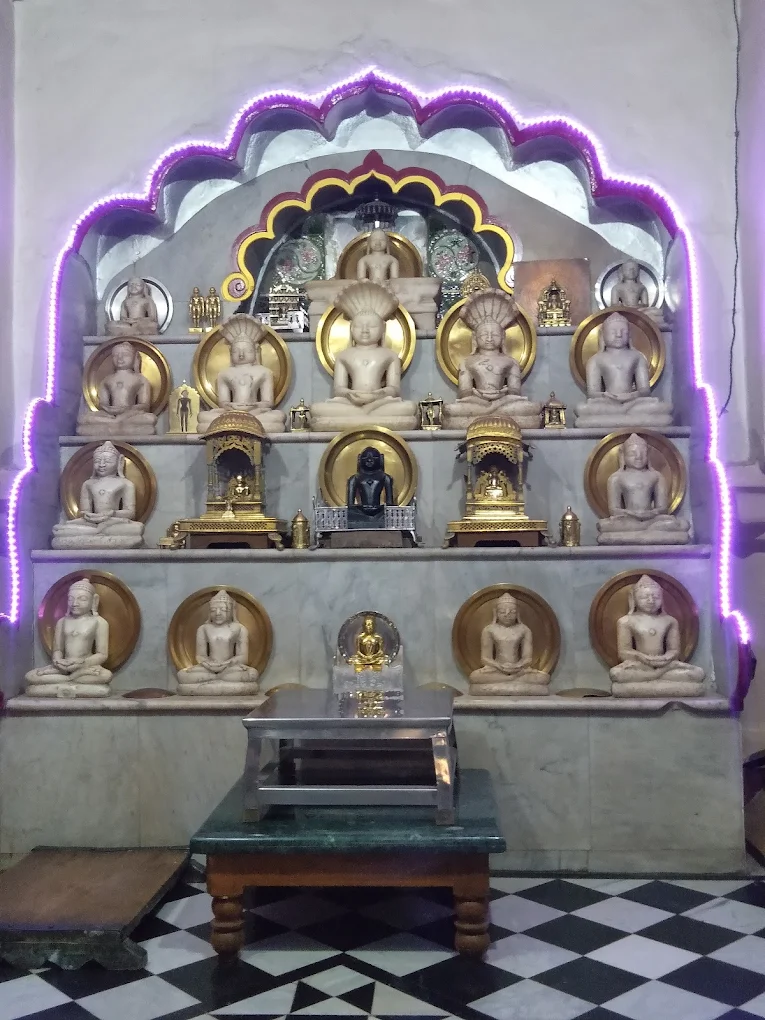Introduction: Discovering Ashti’s Jain Legacy
Many spiritual seekers and heritage enthusiasts often overlook the lesser-known Jain temples nestled in Maharashtra’s countryside. For those yearning to explore Jainism’s rich history beyond the popular sites, the Jain temples of Ashti offer a unique and enriching experience. This article delves into the temples’ history, architecture, and significance, providing insights for both devotees and cultural explorers.
Historical Significance of Ashti’s Jain Temples
Ashti, a village in Partur Taluk of Jalna District, Maharashtra, was once a flourishing center of Jainism. Historically, the village housed five Digambar Jain temples, reflecting a vibrant Jain community. Today, two of these temples remain, standing as testaments to the village’s rich spiritual past.
One of the most significant events in recent history was the reconstruction of the ancient Shanthinath Digambar Jain Temple. Originally made of wood, this temple had fallen into disrepair. In June 2013, under the guidance of Muni 108 Sri PavitraSagarJi Maharaj, a disciple of Acharya 108 Sri Vidyasagarji Maharaj, a three-day Vedhi Pratishta ceremony was held to consecrate the newly rebuilt temple. This event marked a revival of Jain traditions in the region.
Additionally, around 2011, several ancient Jain idols were discovered in a field near Ashti. Some of these idols are now preserved in the Shanthinath Jain Temple, while others were entrusted to the Muktagiri Jain Tirth. The village also contains the Samadhis of approximately 15 Digambar Jain monks, with engraved footprints commemorating their spiritual journey.
Architectural Features of Ashti’s Jain Temples
The Shanthinath Digambar Jain Temple in Ashti showcases traditional Jain architectural elements:
- Main Deity: An ancient black stone idol of Tirthankar Shanthinath in Kayotsarga posture serves as the temple’s primary deity.
- Wooden Carvings: The original wooden temple featured intricate carvings depicting various aspects of Jainism. These carvings have been meticulously preserved and integrated into the new temple structure.
- Manastambha: The temple’s Manastambha (pillar of honor) incorporates the upper portion of the original pillar, mounted atop a newly constructed base, symbolizing continuity and reverence.
These architectural elements not only enhance the temple’s aesthetic appeal but also reflect the deep-rooted Jain traditions of the region.
Religious and Cultural Importance
The Jain temples of Ashti are more than just places of worship; they are cultural hubs for the local Jain community. These temples host various festivals and rituals that foster a sense of unity and spiritual growth among devotees. The presence of idols representing Tirthankaras emphasizes the comprehensive nature of Jain philosophy.
Visiting Ashti’s Jain Temples
Location: Ashti, Partur Taluk, Jalna District, Maharashtra, India
Accessibility:
- Ashti is located approximately 12 kilometers from the taluk center, Partur, and 80 kilometers from the district center, Jalna.
- The village is accessible via local roads connecting to major towns in the district.
- Private buses and cars can easily reach the village.
Best Time to Visit:
- During Jain festivals or annual temple celebrations for an immersive cultural experience.
Conclusion
The Jain temples of Ashti offer a serene and spiritually enriching experience, reflecting the profound heritage of Jainism in Maharashtra. Their unique architecture and historical significance provide a distinctive insight into Jain art and devotion. Whether you’re a devout follower or a cultural enthusiast, a visit to these temples promises a meaningful journey into India’s diverse spiritual landscape.
These temples are not just structures; they are reminders of our roots, our peace, and our spiritual strength. If you ever get a chance, do visit. Even if you have never read a book about Jainism, your heart will understand the calm and truth these places offer.
